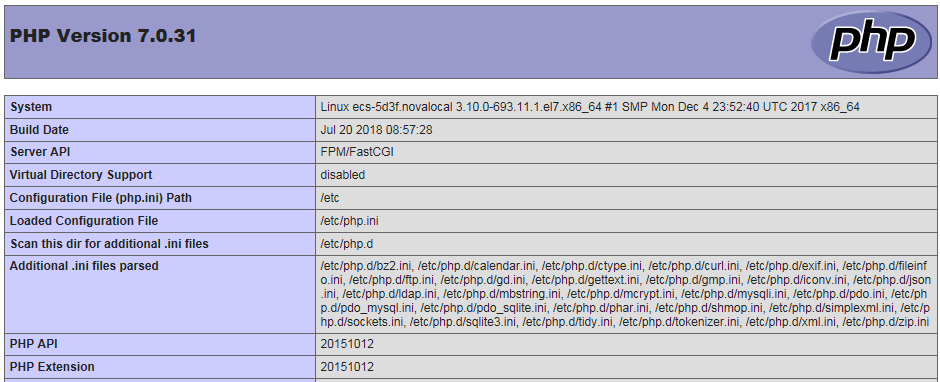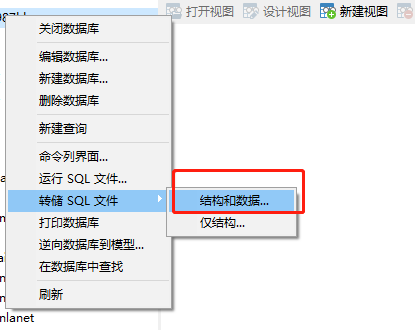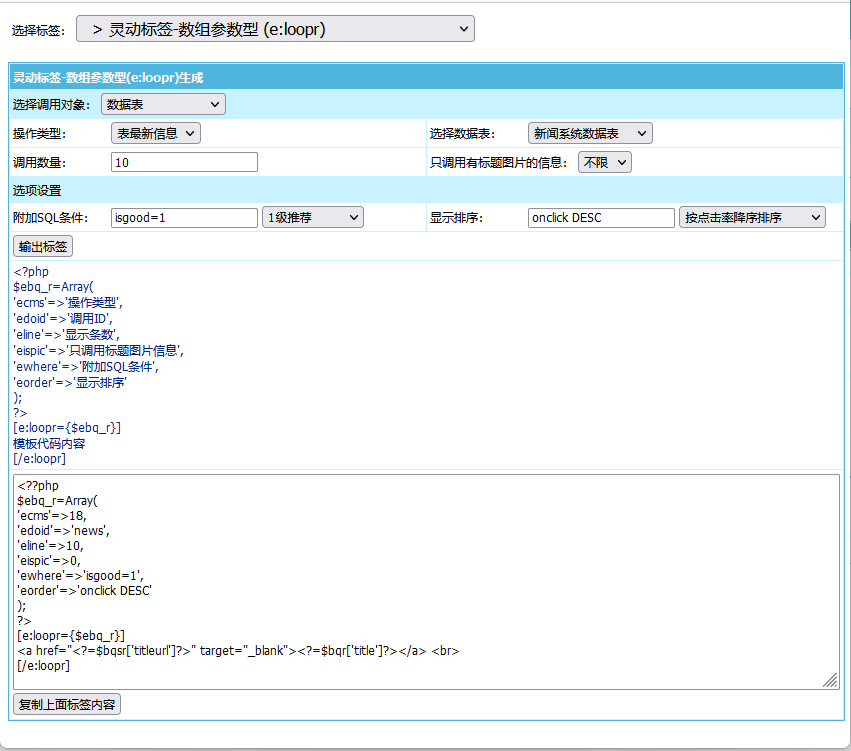本文主要介绍了在华为云上如何使用弹性云服务器的Linux实例手工搭建LNMP平台的web环境。该指导具体操作以CentOS 7.2 64位操作系统为例。Linux实例手工部署LNMP环境具体操作步骤如下:
操作步骤
- 安装nginx。
- 安装MySQL。
- 安装PHP。
- 浏览器访问测试。
前提条件
- 弹性云服务器已绑定弹性公网IP。
- 弹性云服务器所在安全组添加了如下表所示的安全组规则,具体步骤参见为安全组添加安全组规则。
| 方向 | 协议/应用 | 端口/范围 | 源地址 |
|---|---|---|---|
| 入方向 | HTTP(80) | 80 | 0.0.0.0/0 |
一、安装nginx
1、登录弹性云服务器。
2、执行以下命令,下载对应当前系统版本的nginx包。
wget http://nginx.org/packages/centos/7/noarch/RPMS/nginx-release-centos-7-0.el7.ngx.noarch.rpm3、执行以下命令,建立nginx的yum仓库。
rpm -ivh nginx-release-centos-7-0.el7.ngx.noarch.rpm4、执行以下命令,安装nginx。
yum -y install nginx5、执行以下命令,启动nginx并设置开机启动。
systemctl start nginxsystemctl enable nginx6、使用浏览器访问 “http://服务器IP地址”,显示如下页面,说明nginx安装成功。
二、安装MySQL
1、依次执行以下命令,安装MySQL。
rpm -Uvh http://dev.mysql.com/get/mysql57-community-release-el7-8.noarch.rpmyum -y install mysql-community-server2、依次执行以下命令,启动MySQL服务并设置开机自启动。
systemctl start mysqldsystemctl enable mysqld3、执行以下命令,获取安装MySQL时自动设置的root用户密码。
grep 'temporary password' /var/log/mysqld.log回显如下类似信息。
2018-08-29T07:27:37.541944Z 1 [Note] A temporary password is generated for root@localhost: 2YY?3uHUA?Ys执行以下命令,并按照回显提示信息进行操作,加固MySQL。
mysql_secure_installation
Securing the MySQL server deployment.
Enter password for user root: #输入上一步骤中获取的安装MySQL时自动设置的root用户密码
The existing password for the user account root has expired. Please set a new password.
New password: #设置新的root用户密码
Re-enter new password: #再次输入密码
The 'validate_password' plugin is installed on the server.
The subsequent steps will run with the existing configuration of the plugin.
Using existing password for root.
Estimated strength of the password: 100
Change the password for root ? ((Press y|Y for Yes, any other key for No) : N #是否更改root用户密码,输入N
... skipping.
By default, a MySQL installation has an anonymous user,
allowing anyone to log into MySQL without having to have
a user account created for them. This is intended only for
testing, and to make the installation go a bit smoother.
You should remove them before moving into a production
environment.
Remove anonymous users? (Press y|Y for Yes, any other key for No) : Y #是否删除匿名用户,输入Y
Success.
Normally, root should only be allowed to connect from 'localhost'. This ensures that someone cannot guess at the root password from the network.
Disallow root login remotely? (Press y|Y for Yes, any other key for No) : Y #禁止root远程登录,输入Y
Success.
By default, MySQL comes with a database named 'test' that anyone can access. This is also intended only for testing, and should be removed before moving into a production environment.
Remove test database and access to it? (Press y|Y for Yes, any other key for No) : Y #是否删除test库和对它的访问权限,输入Y
- Dropping test database...
Success.
- Removing privileges on test database...
Success.
Reloading the privilege tables will ensure that all changes
made so far will take effect immediately.
Reload privilege tables now? (Press y|Y for Yes, any other key for No) : Y #是否重新加载授权表,输入Y
Success.
All done!三、 安装PHP
1、 依次执行以下命令,安装PHP 7和一些所需的PHP扩展。
rpm -Uvh https://mirror.webtatic.com/yum/el7/epel-release.rpm
rpm -Uvh https://mirror.webtatic.com/yum/el7/webtatic-release.rpm
yum -y install php70w-tidy php70w-common php70w-devel php70w-pdo php70w-mysql php70w-gd php70w-ldap php70w-mbstring php70w-mcrypt php70w-fpm2、执行以下命令: php -v ,验证PHP的安装版本。
回显如下类似信息:
PHP 7.0.31 (cli) (built: Jul 20 2018 08:55:22) ( NTS ) Copyright (c) 1997-2017 The PHP Group Zend Engine v3.0.0, Copyright (c) 1998-2017 Zend Technologies
3、执行以下命令,启动PHP服务并设置开机自启动。
systemctl start php-fpm
systemctl enable php-fpm4、 修改nginx配置文件以支持PHP
(1)执行以下命令打开配置文件“default.conf”。
vim /etc/nginx/conf.d/default.conf(2)按i键进入编辑模式。
(3)修改打开的“default.conf”文件。
在所支持的主页面格式中添加php格式的主页,如下所示:
location / {
root /usr/share/nginx/html;
index index.php index.html index.htm;
}取消如下内容的注释,并设置字体加粗部分为nginx的默认路径,如下图所示:
location ~ \.php$ {
root html;
fastcgi_pass 127.0.0.1:9000;
fastcgi_index index.php;
fastcgi_param SCRIPT_FILENAME /usr/share/nginx/html$fastcgi_script_name;
include fastcgi_params;
}
(4)按Esc键退出编辑模式,并输入:wq保存后退出。
5、执行以下命令,重新载入nginx的配置文件。
service nginx reload四、 浏览器访问测试
1、 在/usr/share/nginx/html/目录下创建“info.php”的测试页面。
(1) 执行以下命令创建并打开“info.php”的测试文件。
vim /usr/share/nginx/html/info.php(2)按i键进入编辑模式。
(3)修改打开的“info.php”文件,将如下内容写入文件。
<?php phpinfo(); ?>
(4)按Esc键退出编辑模式,并输入:wq保存后退出。
2、使用浏览器访问“http://服务器IP地址/info.php”,显示如下页面,说明环境搭建成功。





















评论前必须登录!
注册